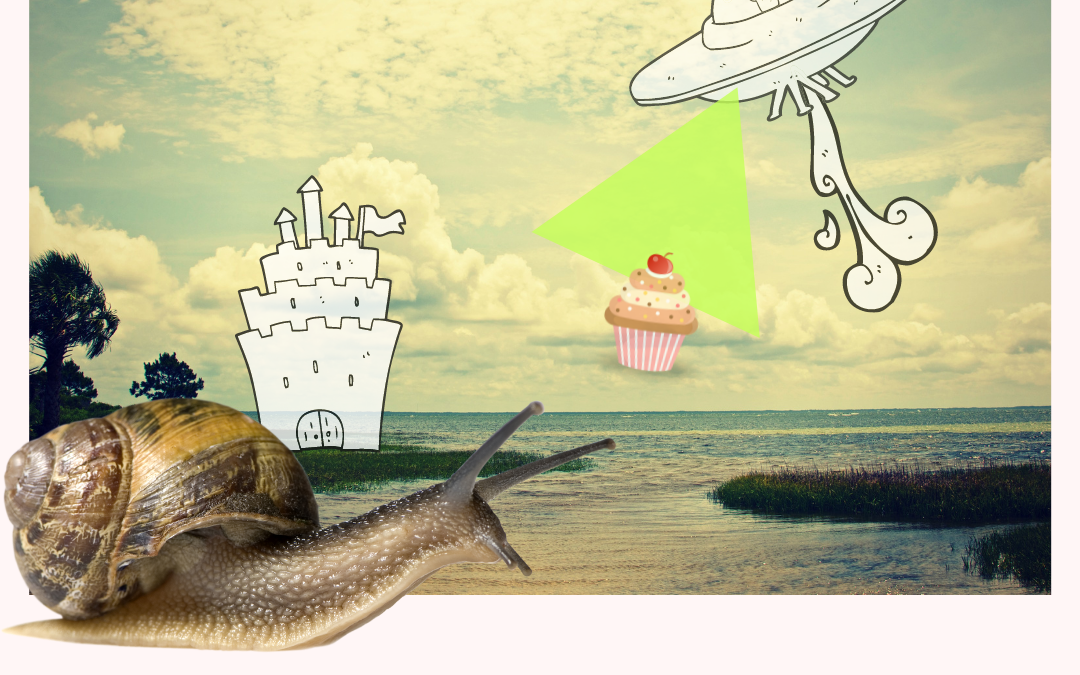Do you remember being a kid? If so, I’m curious, how much time did you spend daydreaming? How much time did you spend thinking about what you would do as a grown up or how you would like your life to look?
Younger children often play creatively, inviting toys and family members into their imaginative worlds. At the age of 7, a lot of my daughter’s play is initiated with the sentence “Let’s pretend we’re at X and I’m a Y and you’re a Z” and then off she goes, full pelt into whatever fantasyland she’s concocted. For this age range imagination and play help kids to make sense of the world around them, to play out scenarios and shape their responses. It’s like practice through performance.
As kids grow older, they’re able to construct more vivid and complex worlds inside their heads. Studies show that the early teen years are a ripe time for daydreaming. Daydreaming is wonderful, it allows us to put ourselves into life situations in a way that is both emotionally immersive and also objective. It can be a bit like a cross between chess and a ‘choose your own adventure’ story. In a daydream, if you don’t like the way it’s playing out, you can ‘rewind’ the action and choose a different path. In a daydream, you can choose to stay within your own personality or highlight attributes that you admire or despise, just to get into the drama of how it could feel. It’s a safe arena for testing the waters of what life could look like. For many kids (and grown ups) when life gets tough daydreams give us scope to problem solve or escape into a friendlier realm.
However, I’m guessing I’m probably not the only teenager who was told that they need to “Spend less time daydreaming”? Sometimes, when you’re immersed in a particularly juicy plotline, real life has far less appeal. In fact it can be downright drab by comparison and it’s much more cosy and inviting to stay up in your head. This of course is inconvenient for grown ups (who generally get antsy when they feel like they’re being ignored), and as kids we get told to pay attention and stop drifting off.
Daydreaming children are told to snap out of it. They may be told they’re lazy or ignorant (Roald Dahl’s school reports often commented on his lack of focus and laziness – daydreaming worked out pretty well for him though huh!?). Children are often told that daydreaming is a ‘bad thing’ and not something grown ups do.
Before writing this I wanted to get a feel for what the world (i.e. google) thinks of the subject, so I typed ‘daydreaming and teen years’ into the google search bar.
Whoah!
I was NOT expecting the results. I thought they’d be lots of friendly articles about how daydreaming is a great tool for creativity and how wonderful it is to expand your potential.
But NOOOOOOO, whatever algorithm I tapped into thinks that children who daydream may be suffering from Maladaptive Daydreaming tendencies, which may be a psychotic disorder (the jury is out on that one). There also seems to have been a fair number of parents googling ‘Does my daydreaming child have ADHD’. I read one particularly savage article from The Times of India. Hello cultural differences! But then…maybe not so different. Daydreaming teens would appear to be quite the concern.
Isn’t that fascinating?
So where does that leave us as adults? Some adults are still wonderful daydreamers, with a depth of clarity and inventiveness that fuels wonderful creative lives. Some adults use daydreaming to find solace from tricky situations or traumatic experiences, in much the same way that some use alcohol, drugs, or other addictive behaviours (both those perceived as being socially acceptable and unacceptable – sport vs gambling).
Some grown ups struggle to get back into the palace of daydreams. Having been conditioned by the generation of grown ups above them, telling them to put away such childish pastimes, it’s hard to allow themselves to let an alternative reality flourish inside their heads.
So why am I telling you this?
Because I believe in the power of imagination. It drives me crazy to think that all through our childhoods we were able to connect into our highest versions of ourselves and yet we were told it was wrong or lazy. We already had access to our most badass future self – imagine what we could achieve if we’d stayed connected. So many young children are masterful at manifesting their desires, because when they’re really young no one has told them that it’s a foolish activity, so they dream big and believe in it’s power.
I feel strongly that if we allow ourselves to cultivate daydreams we can tap into our feelings in a deep way. We can explore what would feel good and what would feel problematic. We can grow to understand what we feel is possible for ourselves and use the container to push our boundaries. As children we were brilliant at tapping into how we would like our futures to look, we could flesh it out in full colour and vibrancy, to the point at which we were so immersed our facial expressions would outwardly display the emotion we were inwardly feeling. In my view this is a useful tool no matter what age we are.
How do we know what we’re working for if we can’t make space to welcome it into our lives?
Daydreaming is the container, it’s a blank canvas on which to investigate options.
Let me ask you a question – if you could live your most glorious life, what would it look like? Where would you live? What form of transport would you take? Who would you interact with? How would it smell, feel and taste? What would be the soundtrack? Would it be the sound of traffic or birds or tinkly spa music? How would you spend your days?
The gorgeous thing about daydreaming is that it doesn’t need to be confined by the parameters of your reality. After all, all things are open to change. And yet, by awakening your wildest imagination, you may see the easy changes that are completely within your control, those changes that may seem small but ultimately move you towards the most glorious version of your life that you can imagine.
What would seem glorious to you would feel very different to someone else. When we create the vision in our heads, we avoid the subjective opinion of others. With no-one else to tell us that we’re ‘doing it wrong’ we’re free to create the vision of our choosing. For one it might look like a life of leisure, eating cake poolside at a Ritz Carlton resort in Bali whilst for another it could look like raising a flock of fancy chickens and creating pottery hens in Aberdeen. That’s the beauty of daydreaming, your version of a glorious life is not up for scrutiny, it’s yours all yours.
Daydreaming and indeed living out the dreams of others, are areas that I touch on in my new course ‘Glorious’. Later this week I’ll be popping up here again with more excitingness, so if you’re curious already, look out for that.
Big love,
Carrie

